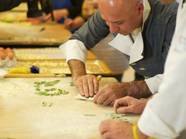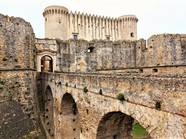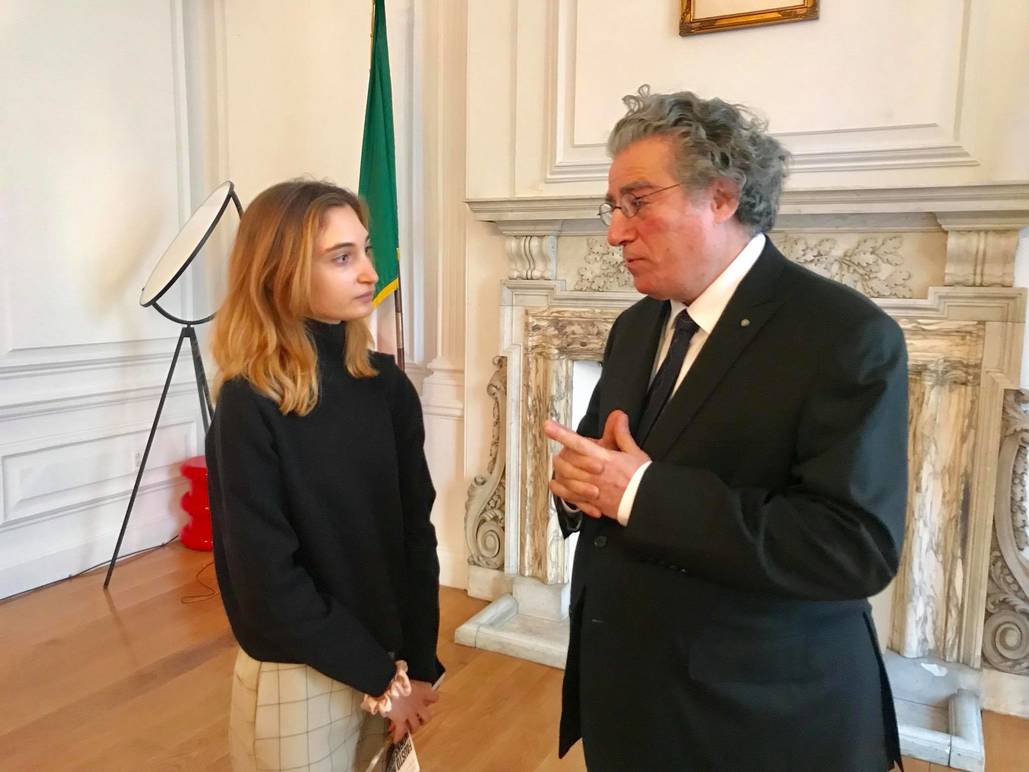Fausto Melotti and Lucio Fontana: New York Exhibitions Paving the Way for Contemporary Italian Artists
Conceived in dialog with the Met Breuer’s current exhibition “Lucio Fontana: On the Threshold” as well as with “Spatial Explorations” held at the Italian Cultural Institute, the exhibition “Fausto Melotti: Works from the Olnick Spanu Collection” organized by Magazzino Italian Art Foundation at the Consulate General of Italy, introduced new audiences to the work of the Italian Modernist artist, highlighting his connection to Fontana and the influence that both artists have had and continue to have on the Italian and global artistic landscape.
The Italian Consulate in New York held a closing reception for “Fausto Melotti: Works From the Olnick Spanu Collection”, which it had been hosting since January 28. The exhibition reflected the mission of its organizer, Magazzino Italian Art, a foundation based in Cold Springs, New York, focused on supporting contemporary Italian artists and fostering discussions on Postwar and Contemporary Italian Art in the United States.
A vision shared by the Consul General of Italy in New York, Francesco Genuardi, who in his speech emphasized the importance of engaging in “cultural diplomacy” and promoting the arts, as well as by the Italian Ambassador to the United States, Armando Varricchio, who also stressed how shows such as this one serve to highlight a characteristic of the Italian DNA, that is the “strive for constant innovation.”
A characteristic which, as Giorgio Spanu, co-founder with his wife Nancy Olnick of Magazzino Italian Art and owner of the vast collection from which the works on view were selected, emphasized is common to immigrants, which artists like Fontana and Melotti were. They represent how “immigration is an asset.”
Perhaps the most striking elements of the exhibition were Fausto Melotti’s ceramic works, showcased in the foyer. These seemingly simple yet beautiful glazed vases and pots are a testimony to the artist’s skill, versatility and creative curiosity. They also speak to a new way of perceiving ceramics, as an artform that went beyond the traditional distinction between the “artisan practice of creating useful objects and the fine art tradition of sculpture.”
Lucio Fontana, the acclaimed founder of Spatialism, until now mostly known for his “slashed” canvases, was also interested in investigating ceramics. Melotti and Fontana were friends, they worked together, particularly in the region Liguria, where they learned and experimented with a local ceramic tradition. “Fontana was primarily a sculptor, he was a pupil of Adolfo Wildt along with Melotti. I have always approached his practice through sculpture”, explains Giorgio Spanu.
Both Mr. Spanu and Vittorio Calabrese, the director of Magazzino, declared themselves truly satisfied with the exhibition and the response it gathered. Although it was held in the Consulate, a space open to the public only under reservation, the show managed, through special programs and events, to introduce new audiences and collectors to the work of this great Italian artist.
And as the Italian Ambassador said, shows such as this one and the Met Breuer’s Fontana exhibit are important not for these artists and their legacies but “also for all Italian artists who followed and will follow.” Familiarizing American and international audiences with the Italian Modern and Contemporary art traditions is fundamental for them to understand where living Italian contemporary artists are coming from and truly appreciate their work.
It’s with this in mind that Magazzino recently opened its own Research Center, which currently holds over 4,000 publications, including more than 300 rare books and hosts its first Scholar-in-Residence, Francesco Guzzetti, who is working on expanding the research on Italian Contemporary Art and on developing and participating in the public programs offered by the foundation.
So stay tuned for more interesting events and initiatives to come.













































i-Italy
Facebook
Google+
This work may not be reproduced, in whole or in part, without prior written permission.
Questo lavoro non può essere riprodotto, in tutto o in parte, senza permesso scritto.